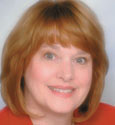 |
 Candy Adams,
Candy Adams,
CTSM, CME,
CEM, CMP, CMM,
"The Booth Mom,"
is an independent exhibit-management
consultant, trainer, speaker, writer, and an Exhibitor conference
faculty member.
CandyAdams
@BoothMom.com |
| |
 he No. 1 reason exhibitors say they exhibit at trade shows is to gather qualified leads. Yet according to industry estimates, nearly 80 percent of leads never result in any follow-up action after a show. he No. 1 reason exhibitors say they exhibit at trade shows is to gather qualified leads. Yet according to industry estimates, nearly 80 percent of leads never result in any follow-up action after a show.
As an exhibit manager, you may have no control over what happens to a lead once the show is over. But you can make sure that you collect meaningful information in a format that makes lead follow-up easy.
By starting backwards and talking to the people who will actually be following up on the leads, you'll be able to gain insight into their information needs and create practical lead forms that can generate tangible results.
Qualifying Questions
The first question to ask your sales team is what they need to know about prospects and existing customers to determine if a lead is worth pursuing. Getting their experienced input not only improves the quality of the leads and ease of follow-up, but also helps increase the sales force's ownership of the show process.
Use the information from your discussion to create questions that will help your sales staff prioritize, distribute, and follow up on the leads. In addition to yes/no and multiple-choice questions, write open-ended questions. Here are some examples of effective qualifying questions:
 Are you currently a customer? If so, what product(s) have you purchased and how are they filling your needs? What would you change to improve them? Are you currently a customer? If so, what product(s) have you purchased and how are they filling your needs? What would you change to improve them?
 Which products interest you? (Follow this question with a list of specific products or model numbers.) Which products interest you? (Follow this question with a list of specific products or model numbers.)
 How would you use this product? How would you use this product?
 When do you plan to make your next purchase? When do you plan to make your next purchase?
 What is your role in your company's purchasing process? Are you a decision maker, influencer, buying agent, or literature gatherer? What is your role in your company's purchasing process? Are you a decision maker, influencer, buying agent, or literature gatherer?
Put the questions in the logical order that your staff will most likely ask them. Beware of putting too many questions on the lead form and turning a conversation into an interrogation. I've heard that seven is the magic number of questions that won't put an attendee on the defensive, but some busy executives will draw the line at four, while others will happily answer an unlimited number of questions as long as they know you're taking notes.
Rating System
Now that you know what information your sales reps need and how they will prioritize leads, you can eliminate a time-consuming step for them by classifying the leads as you collect them on the trade show floor.
Develop a rating system with rankings of A, B, and C leads, with specific criteria for each rating. For example, if an attendee expresses interest in your product, is authorized to make a purchase, and has a sufficient budget, he or she is probably an A lead; whereas someone who is interested but not looking to purchase in the next year or so might be a B or C lead.
Keep in mind that an attendee's answers to the questions on the lead form should not be the only determinant in rating the lead. Your staffers should also evaluate the behavior of attendees in the booth and the activities they participate in. For example, prospects who visited a presentation and/or watched a demo will generally be more qualified leads than those who only visited a short presentation or those who did a "drive-by scanning" of their badge to get a giveaway but didn't talk with anyone else in your booth.
Follow-Up
Of course, the lead form is useless without basic contact and demographic information. If you will be stapling a business card or a printout from an automated system to a manual form, make sure it won't cover up other important qualifying information in the event the form is photocopied for distribution.
To help your salespeople know what action to take with a customer or prospect after the show, ask attendees how and when they want salespeople to contact them. List options on the lead form so staffers can just check a box next to the action the salesperson should take such as: Give a personal demonstration; send more information by mail or e-mail; send newsletter or catalog; or contact personally by phone, e-mail, or mail. Also leave a space on the lead form to indicate if the attendee prefers to be contacted on a specific date or time.
Finally, make sure you have a way to identify the staffer who collected the lead. This allows you to easily track who took the most productive leads, and coach those staffers who are not gathering all of the information asked for on the form.
Lead-Gathering Systems
Your options for lead systems include: 1) using the show's automated lead-gathering system, 2) purchasing or renting your own automated system that can dovetail the data into your company's database, 3) using a manual, hard-copy lead form, or 4) using a combination of automated and manual lead forms.
Automated systems vary. Most of them allow you to scan the attendees' badges to collect basic demographic information encoded on the badges, and then print the information on the spot. Some also allow you to type notes, answer customized questions, and include other information, such as company size, general product interest, and budget for what they're looking to purchase at the show.
If you use a combination of manual and automated systems, keep a stapler (or adhesive tape if you'll be scanning the forms) in the booth so you can quickly fasten the printed demographic information to the manual form.
Additional tips for manual forms:
 Consider the size of the lead form. I like to print forms in landscape format, three to an 8.5-by-11-inch page (in columns), and then cut them in thirds for easy handling. Consider the size of the lead form. I like to print forms in landscape format, three to an 8.5-by-11-inch page (in columns), and then cut them in thirds for easy handling.
 Provide a hard writing surface. Provide a hard writing surface.
 Title the lead form with your company's name and/or logo, and the name of the show. The show's name will be helpful to those handling hard-copy leads after the show, to distinguish them from leads gathered from other shows. Title the lead form with your company's name and/or logo, and the name of the show. The show's name will be helpful to those handling hard-copy leads after the show, to distinguish them from leads gathered from other shows.
 Use a legible font size, such as an 11- or 12-point font. Use a legible font size, such as an 11- or 12-point font.
 Leave blank lines for comments. These comments by the attendee or your sales staff may include other qualifying data or special requests to be fulfilled after the show. Leave blank lines for comments. These comments by the attendee or your sales staff may include other qualifying data or special requests to be fulfilled after the show.
Designing a lead form is like any other design process: Form should follow function. By including the people who will use the leads when you plan your lead-retrieval strategy and tactics, you can truly "take the lead" from your competitors and help turn sales leads into actual sales.e
|





 he No. 1 reason exhibitors say they exhibit at trade shows is to gather qualified leads. Yet according to industry estimates, nearly 80 percent of leads never result in any follow-up action after a show.
he No. 1 reason exhibitors say they exhibit at trade shows is to gather qualified leads. Yet according to industry estimates, nearly 80 percent of leads never result in any follow-up action after a show.


